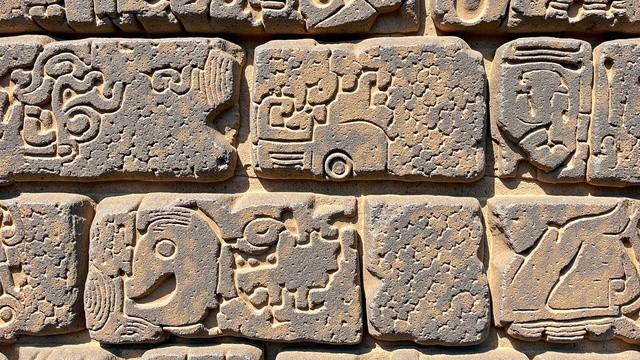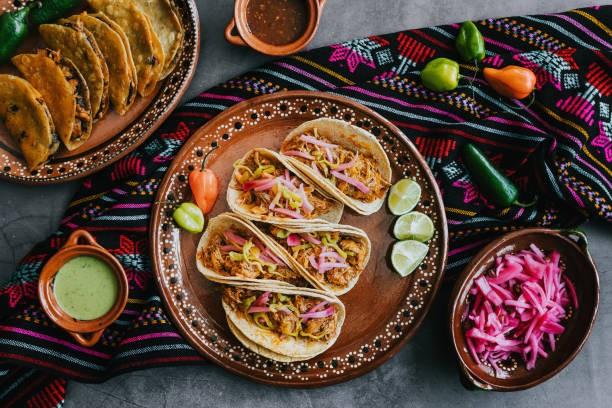

The Maya
By: Camila Sosa
Mayas Cities
• The Maya civilization built impressive cities throughout Mesoamerica, especially in presentday Mexico, Guatemala, Belize, and Honduras. These cities, such as Tikal, Chichen Itza, and Palenque, were known for their grand temples, palaces, and pyramids. Each city had its own ruler and served as a center of religion, politics, and trade. The Maya used advanced knowledge in astronomy and mathematics to design their cities with great precision.



Tikal
• Tikal was one of the largest and most powerful Maya cities, located in present-day Guatemala. It reached its peak between 200 and 900 AD. The city had huge temples, tall pyramids, royal palaces, and ball courts. Temple IV, one of its tallest structures, rises about 70 meters (230 feet) high!
• Tikal was a major center of religion, politics, and trade. It had alliances and rivalries with other cities like Calakmul. The Maya people living in Tikal were skilled farmers, architects, and astronomers. They used a complex writing system and made a calendar to track time.
• Today, Tikal is a UNESCO World Heritage Site and a popular place to explore ancient Maya history in the middle of the jungle.


Chichen Itza
• Chichen Itza was one of the most important Maya cities, located in the Yucatán Peninsula of Mexico. It became a powerful center between 600 and 1200 AD. The city is famous for El Castellano (also called the Temple of Kukulkan), a giant pyramid with 365 steps—one for each day of the year!
• Chichen Itza was a center for religion, astronomy, and trade. The Maya there studied the stars and built their buildings to align with the sun and planets. During the spring and fall equinoxes, a shadow in the shape of a snake appears on the side of El Castillo—an amazing example of Maya science and art.
• The city also has a large ball court, sacred cenotes (natural wells), and many temples. Chichen Itza shows the incredible skills and beliefs of the Maya people.

Location:
Chichen Itza vs. Tikal
Tikal
Chichen Itza
• Mexico (Yucatán Peninsula)
• Around 600–1200 AD
• El Castillo pyramid, equinox shadow, sacred cenotes
• Religious, astronomical, and trade center
• Mix of Maya and Toltec styles
• Guatemala (deep in the jungle)
• Around 200–900 AD
• Tall pyramids (like Temple IV), rich jungle setting
• Religious, political, and military center
• Classic Maya architecture, very tall temples
• One of the tallest Maya structures in the world


• Pyramid has 365 steps—

Maya Acheivements
• The Maya civilization was one of the most advanced cultures of ancient Mesoamerica. They made many important achievements in science, math, writing, and architecture. With their deep knowledge of astronomy, they created accurate calendars and could predict eclipses. They also developed a complex writing system and were among the first to use the number zero. The Maya built great cities with tall pyramids, beautiful art, and advanced technology—showing just how brilliant and creative their society was.

Calendar System.
• The Maya created one of the most advanced calendar systems in the ancient world. They used Two main calendars :
• The Haab’ was a solar calendar with 365 days, based on the sun’s cycle. It helped organize farming, daily life, and seasons.
• The Tzolk’in was a 260-day sacred calendar used for religious events and rituals. These two calendars worked together in a system called the Calendar Round, which repeated every 52 years. The Maya also used a third, very advanced calendar called the Long Count, which could track thousands of years and was used to record historical events.



Mathematics
• The Maya were excellent mathematicians. They were among the first in the world to understand and use the concept of zero—a huge breakthrough in math. They wrote numbers using a vigesimal system (based on 20), using dots (•) for 1, bars (―) for 5, and a shell symbol for 0. This number system helped them record dates, make calculations, and track time with amazing accuracy, especially in their calendar and astronomy work.


Writing System
• The Maya developed a complex hieroglyphic writing system, with more than 800 symbols. Their writing combined pictures (called glyphs) that represented sounds, words, or ideas. They carved these glyphs into stone monuments and also wrote on codices-folded books made of bark paper.
Maya writing recorded important events, myths, rulers’ names, and religious practices, preserving the rich history and beliefs of their civilization.


Daily Life
• Daily life for the ancient Maya was shaped by their environment, traditions, and social class. Most Maya people lived in small villages and worked as farmers, growing corn, beans, and squash—the main foods of their diet. Others were, craftsmen, traders, warriors, or priests depending on their role in society. The Maya had a rich culture filled with rituals, music, clothing, and family traditions. Religion was part of everyday life, with people giving offerings and attending ceremonies. Whether living in great cities like Tikal or in farming villages, Maya people followed customs that helped their communities stay strong and connected.


Food
• The Maya had a diet based on what they could grow and find in the land around them. Their most important food was maiz (corn), which they used to make tortillas, tamales, and a corn drink called atole. They also ate beans, squash, chili peppers, tomatoes, and avocados. For protein, they raised turkeys and dogs and hunted animals like deer and wild pigs. They drank chocolate (cacao) as a special treat, often mixed with spices, and used cacao beans as money!


Clothing
• Mayaclothingwasdifferentdependingon yourstatus.
• Menusuallyworealoinclothandsometimesa cottontunic.
• Women wore bluses and long skirts called huipiles, often decorated with colorful patterns. Wealthy Maya wore, jewelry made of jade, feathered headdresses, and beautiful embroidery. They also practiced, body decoration like painting their skin, wearing tattoos, and shaping their skulls or teeth to followbeautycustoms.

Religion
• Religion was part of everything in Maya life. They believed in many gods of the sun, rain, corn, death, and more. People made offerings of food, flowers, or animals to please the gods. The Maya built large temples and pyramids for worship. Priests led rituals, including bloodletting ceremonies and sometimes human sacrifices to ask for rain, good harvests, or protection. The calendar and astronomy were also closely connected to their religion.



Important events
• The Mayan civilization was one of the most advanced cultures of ancient Mesoamerica. It developed over thousands of years and experienced periods of great success and sudden decline. The history of the Maya is usually divided into two major phases: The Rise, when their cities, culture, and knowledge flourished, and The Fall, when many major cities were abandoned and power shifted to other regions. Understanding these events helps us learn how the Maya built such a powerful society —and what challenges caused its decline.


The Rise
• The rise of the Maya civilization began around 2000 B.C., and continued through the Preclasic and Classic Periods (up to about 900 AD). During this time:
• The Maya developed Farming, built villages , and later created large cities.
• They invented reating system , advanced, astronomy and matematics and built temples and pyramids.
• Great cities like Tikal, Palenque, and Copan became powerful centers of politics, religion, and trade.
• This period is known as the Golden Age of the Maya.


The Fall…
• After 900 AD, many major cities in the souyhern lowl began to decline. This period is called the Classic Collapse. Possible causes include:
• Drought and climate change
• Warfare between city-states
• Overpopulation and resources shortured
• Power shifted to cities in the north, like Chichen Itza, during the Postclassic Period. These cities continued Maya traditions until the arrival of the Spanich in the 1500s. The last Maya kingdom fell in1697, but Maya people and culture are still alive today.

